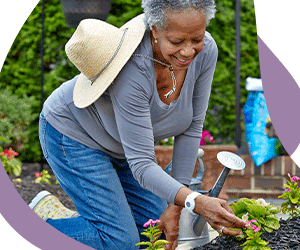The CDC has found that one out of three senior citizens will experience a fall at least once a year. Falls can be especially critical for seniors, causing fractures, concussions, and even death. 60% of all falls occur within the home. Taking safety precautions within the home can help prevent accidents and lead to a healthier and longer life. The following is a list of simple actions that can greatly increase home safety and decrease your risk for a fall at home.
- Exercise – The number one action you can take to decrease your overall risk of a fall is to be active. 30 minutes of exercise a day is enough to maintain your mobility, flexibility, balance, and ability to avoid a fall.
- Add Safety Supports to the Home – make sure you have non-slip mats in the kitchens and bathrooms, that your stairs have strong railings, and you might want to consider installing handrails in the hallways. Having the proper support around you will help you stay on your feet.
- Clear out the Clutter – most falls happen from falling over something. Help prevent accidents in your home by cleaning up any clutter, trash, plants, or furniture that are filling up the house. Streamlining will make moving around much easier, and safer.
- Dry Floor – be diligent about cleaning up spills or any moisture that may have collected on the floor. This is especially important in kitchens or bathrooms, where water is more likely to be on a tiled floor or slick surface.
- Proper Lighting – dim lighting will increase your chance of falling, especially if you already suffer from any vision problems. Turn on the lights, add more lamps, and open the curtains.
- Up-to-Date Eye Prescription – help yourself avoid dangerous situations by having the proper prescription in your glasses, as well as being regularly checked for eye conditions like glaucoma.
- Donate Area Rugs – Rugs are a huge trip risk, causing serious injuries every year. Donate your rugs and enjoy a safer home.
- Wear Slippers – Hardwood floors, while beautiful, are also slippery and high-risk for falls. Wearing slippers can help with grip and stability on smooth flooring.
- Stay Off Steps – step stools, low steps, or standing on chairs to reach higher areas should be avoided, especially if you are reaching for anything heavy.
- Don’t Wear Baggy or Clothing That is Too Long – if your clothes are ill fitting they are more likely to get in your way. Stay away from long pants or overly large clothes that may contribute to a fall.
Taking a little extra care and precaution in the home can greatly increase your safety and help prevent a future fall.
ABOUT THE AUTHOR: Medical Guardian is a leading provider of innovative medical alert systems that empower people to live a life without limits.

